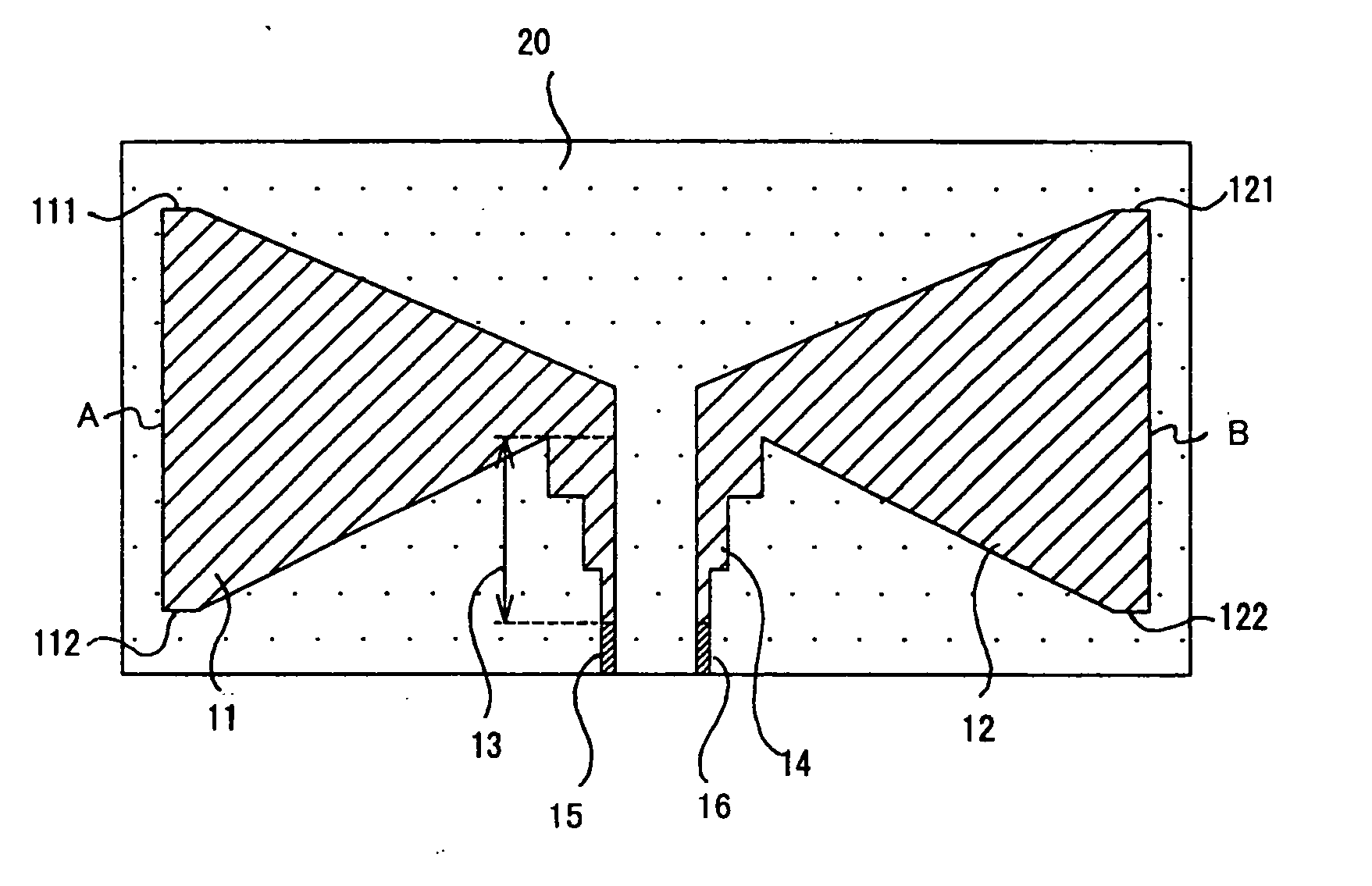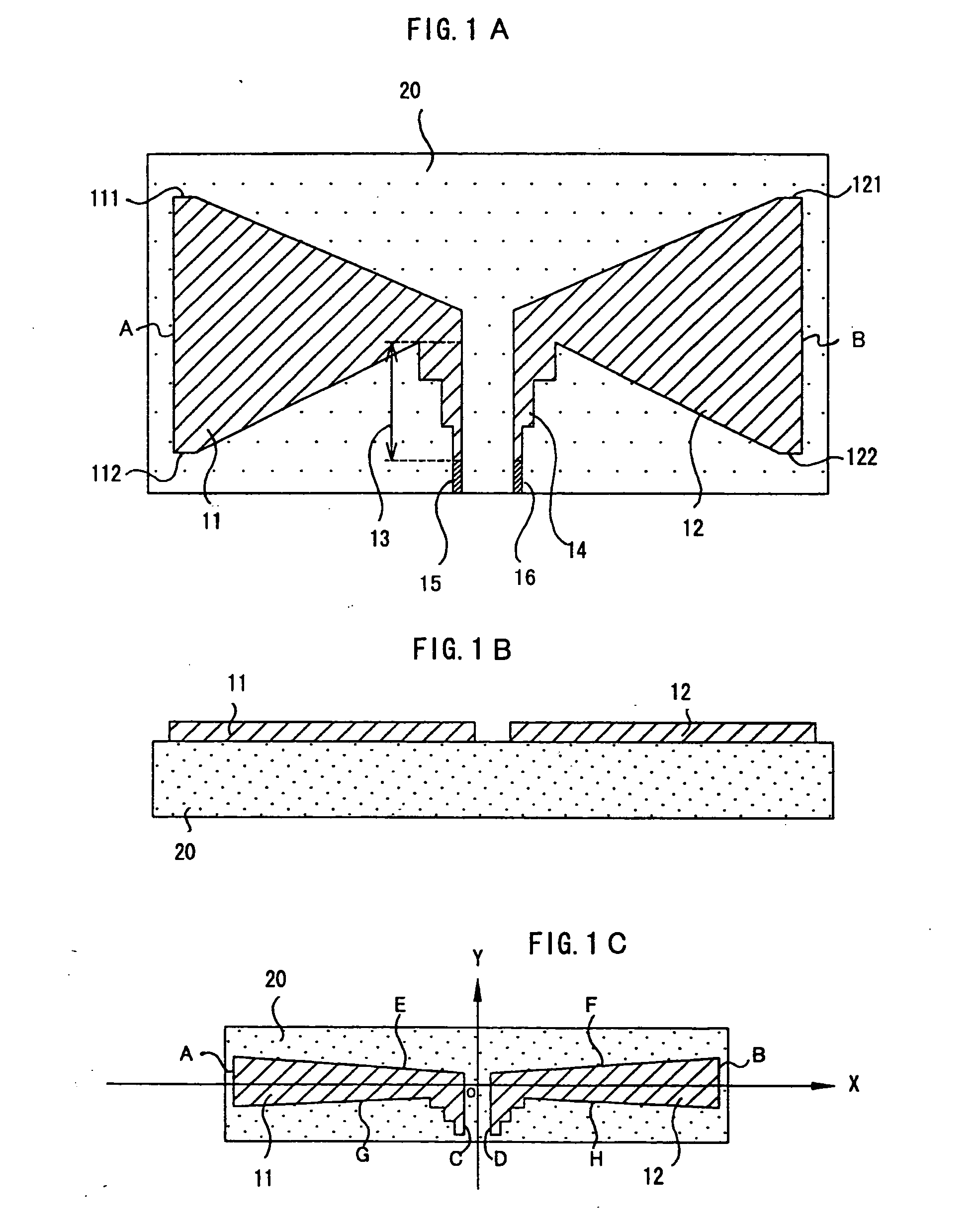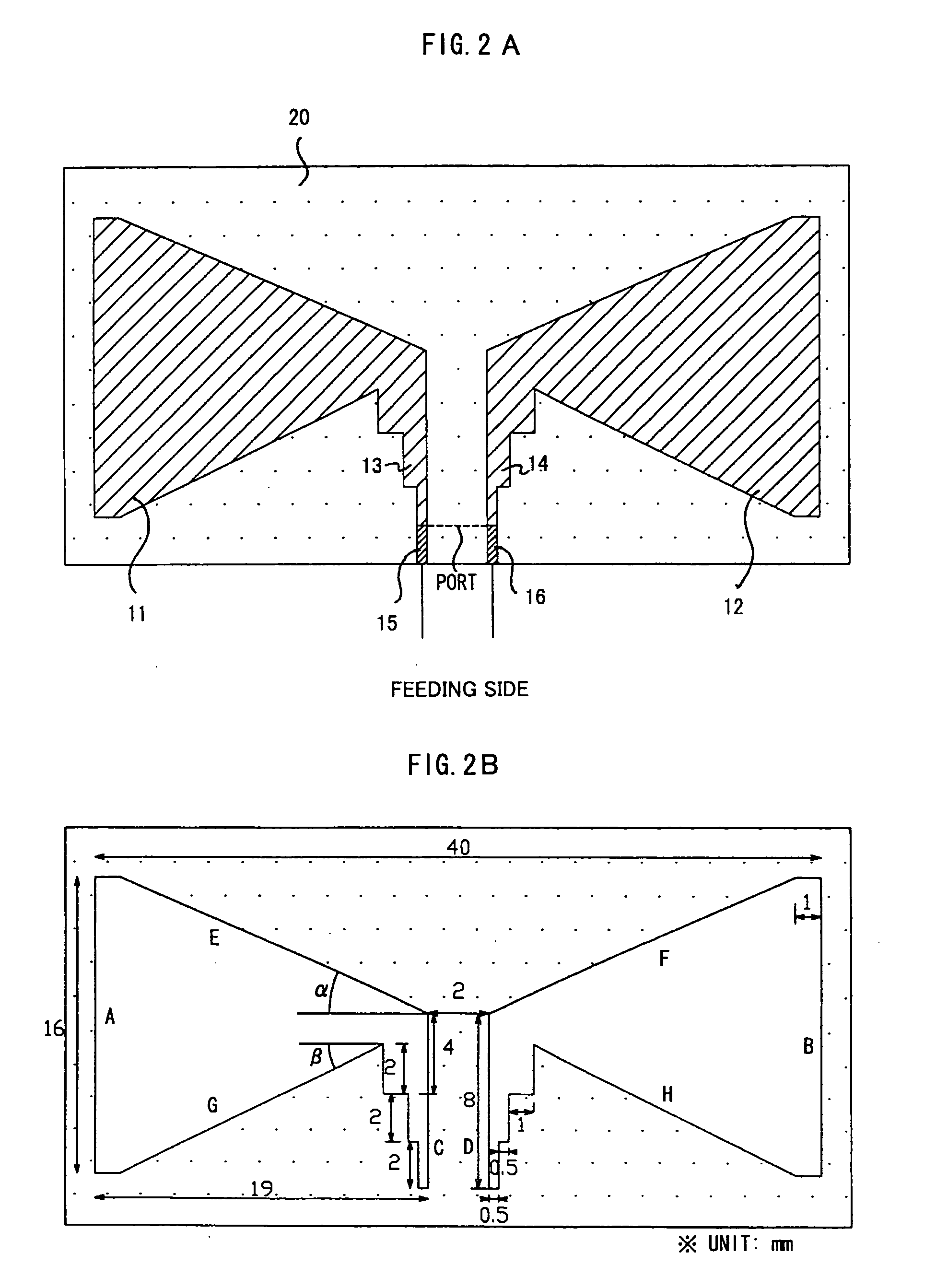Ultra wideband bow-tie printed antenna
a printed antenna and ultra wideband technology, applied in the direction of antennas, antenna details, antenna feed intermediates, etc., can solve the problems of not being able to not being able to cover the ultra wideband frequency range of 3.1-10.6 ghz, and printing antennas that cannot meet the practical use of ultra wideband communication devices, etc., to achieve the effect of easy fabrication and light weigh
- Summary
- Abstract
- Description
- Claims
- Application Information
AI Technical Summary
Benefits of technology
Problems solved by technology
Method used
Image
Examples
Embodiment Construction
[0042]FIG. 1A and FIG. 1B show an ultra wideband printed antenna according to a preferred embodiment of the present invention. Each of antenna elements 11, 12 is the same size, and a pair of the antenna elements makes a bow-tie shape. They are printed on a thin substrate of 0.5 mm made with the relative permittivity of εr=4.4. The printed antenna according to the preferred embodiment of the present invention is a kind of dipole antenna, which is different from the bow-tie type patch antenna shown in FIG. 14A and FIG. 14B. Moreover impedance matching portions are formed between the antenna elements and strip lines. The printed antenna according to the preferred embodiment of the present invention is fed through a co-planar strip line of 75 Ω for example.
[0043] In the following embodiment, substrate 20 is made of FR4, and the printed pattern comprising antenna elements 11, 12 and impedance matching parts 13, 14 are made of copper. Insulation materials, such as Silicon (Si) or Teflon,...
PUM
 Login to View More
Login to View More Abstract
Description
Claims
Application Information
 Login to View More
Login to View More - R&D
- Intellectual Property
- Life Sciences
- Materials
- Tech Scout
- Unparalleled Data Quality
- Higher Quality Content
- 60% Fewer Hallucinations
Browse by: Latest US Patents, China's latest patents, Technical Efficacy Thesaurus, Application Domain, Technology Topic, Popular Technical Reports.
© 2025 PatSnap. All rights reserved.Legal|Privacy policy|Modern Slavery Act Transparency Statement|Sitemap|About US| Contact US: help@patsnap.com



